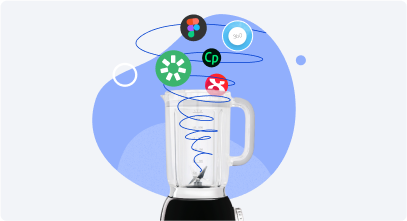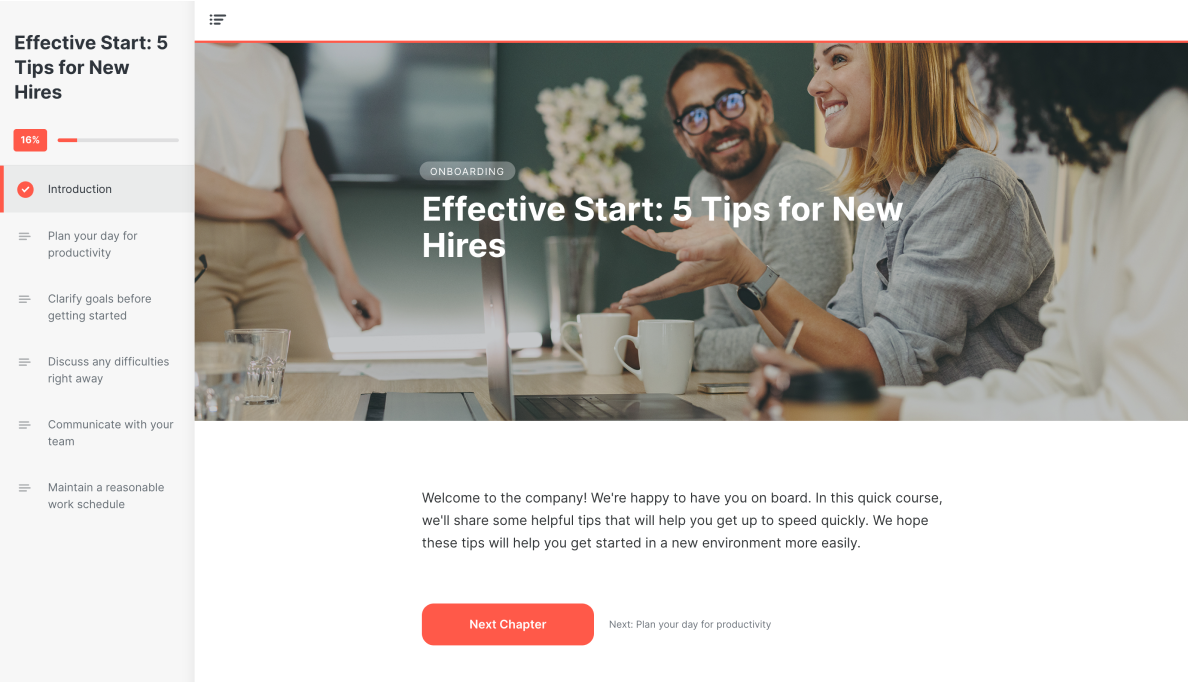Articulate Rise 360 vs. Articulate Storyline 360: A Comparison Review for 2026

Articulate 360 offers two popular eLearning authoring tools: Rise 360 and Storyline 360. How can you decide which tool is best for your eLearning course or training project?
We answer this and other questions in our comprehensive Articulate Rise 360 vs. Articulate Storyline 360 comparison guide. Plus, we reveal the best alternatives to Articulate that you can try in 2026.
What is Articulate Storyline 360?
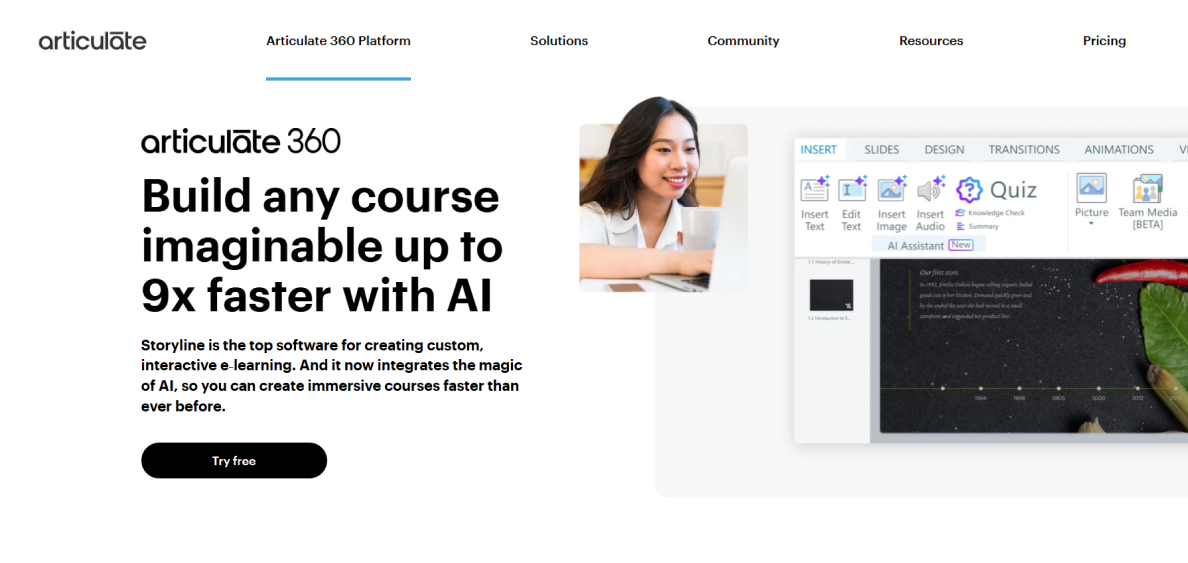
Articulate Storyline 360 is a slide-based eLearning authoring tool that boasts an interface similar to Microsoft PowerPoint.
Read about the difference here: Articulate 360 vs. PowerPoint: Which Is Right for You?
What does it do?
Articulate Storyline 360 is basically a blank canvas with options for building custom eLearning interactions. With Storyline, you can build your own software simulations, games, and other interactions from scratch. It also has a wide range of downloadable, customized templates that you can tailor to your project to design attractive eLearning courses.
Since it’s similar to Microsoft PowerPoint, it’s relatively straightforward to use if you’re already good with PowerPoint. The slide templates speed up the development process and provide some ideas on how to lay out your eLearning courses.
What type of eLearning projects is it best for?
As we’ve already mentioned, Articulate Storyline 360 is great for building simulations, program games, and hotspots; plus, you can create complex interactions. This includes highly tailored branching scenarios. However, longer development times mean it’s not the best option for building a large volume of eLearning materials from scratch.
Key Features of Articulate Storyline 360
Upon comparing Articulate Rise and Storyline, we see that Rise offers the following key features:
- Intuitive interface
- Content library integration
- Animations
- Screen recording
- Software simulations
- 20 interaction templates
- Quiz maker with 20 question templates
- Interactive videos
- VR projects
- Compatible with SCORM and xAPI
- Ability to work offline
This online course is a great (and very cute) example of appealing course content made with Storyline 360.
What is Articulate Rise 360?
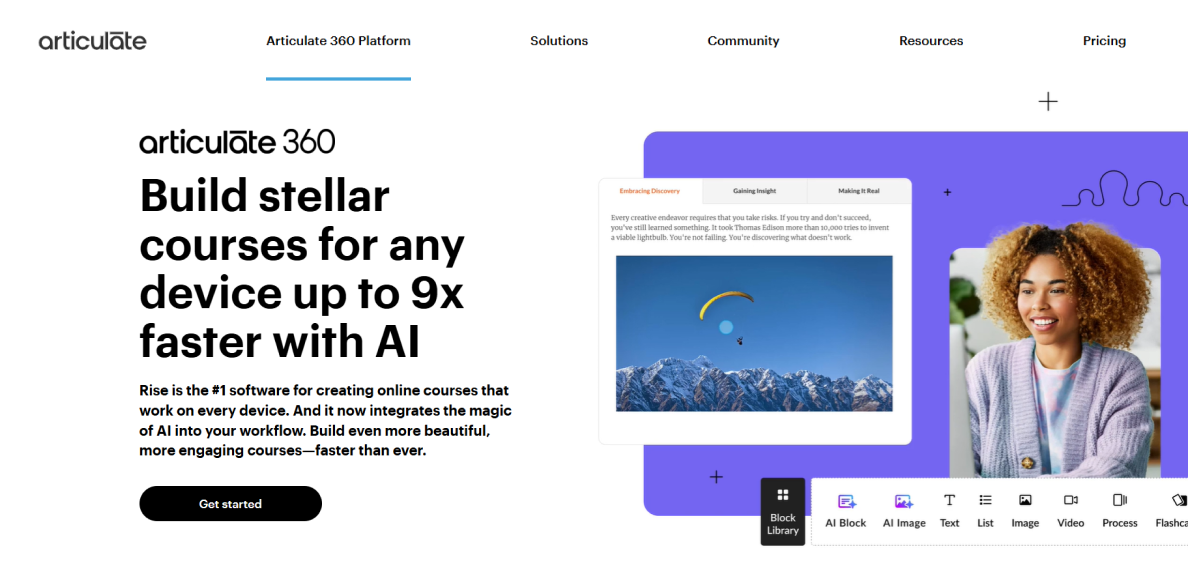
Articulate Rise 360 is a browser-based authoring tool that makes building outstanding eLearning content from scratch quick and easy. It has a wide range of built-in templates and interactions to speed up the content development process.
What does it do?
Articulate Rise 360 consists of content-building blocks that you can mix and match to create eLearning courses. The content is scrollable, and you can break up sections using buttons. A visually appealing progress bar appears on the side of the screen to let learners know how far they’ve progressed in the course.
Compared to Storyline 360, instructional designers have much fewer customization options in an eLearning course created with Articulate Rise 360, and almost no custom interactions are available. However, this is an advantage if you’re not an experienced creator and want to stick to a tried-and-true layout in a more traditional eLearning authoring tool.
Rise 360 is responsive on mobiles, desktops, and tablets, so you can rest assured that your eLearning content will look good on any device.
Thanks to its simplicity, there’s next to no learning curve with Articulate Rise 360.
Key features of Articulate Rise 360
- User-friendly interface
- Responsive on different screen sizes
- Library of content blocks (timelines, accordions, flashcards, sorting activities)
- Quiz lesson with 4 question templates and a question bank
- Team collaboration
- Compatible with SCORM and xAPI
- No installation required
What types of eLearning projects is it best for?
Articulate Rise 360 is a good choice for instructional designers with little experience creating learning content or projects with a short development timeline. In terms of content, it’s best suited for projects with lots of text, images, or audio-visual elements.
Here’s an example of a course made using the Rise 360 authoring tool:
Also read: The 60+ Best Instructional Design Software Tools and Resources
Articulate Storyline 360 vs. Rise 360: What’s the Difference?
If you’re torn between Articulate Rise and Storyline, then keep reading. In this section, we break down the key differences between the two adaptive authoring tools, so you can choose the best option for your eLearning project.
We’ll weigh the following criteria as we compare Storyline and Articulate Rise 360:
- Customization
- Responsiveness
- Navigation/user-friendliness
- Development time
- Application
Pros and Cons of Storyline 360
Let’s start by comparing the pros and cons of Storyline 360.
Pros
- Highly customizable: authors can add effects and triggers, modify objects, and create custom interactions
- Facilitates creativity: users have endless options to adapt built-in features to suit their vision
- Provides a range of advanced capabilities, including screen recording, quizzes, pre-built slide templates, and software simulations
- Allows you to create content offline
- Has a simple drag-and-drop interface
- Authors can create personalized learning and enable learners to skip to specific sections
- SCORM compliant
Cons
- The vast range of features can be overwhelming for beginners; some of them need further explanation
- eLearning courses are mostly restricted to desktops and laptops — no option to adapt content for mobile devices
- The high level of features and customization tools leads to slower development times
- Must be downloaded to a Windows computer
- The built-in video editor is basic compared to other tools
Pros and Cons of Rise 360
Now, here’s a look at the pros and cons of Rise 360.
Pros
- Intuitive and user-friendly interface with a negligible learning curve
- A simple, templated format and many ready-to-use audio-visual elements
- A solid range of built-in interactions
- A review feature that facilitates gathering feedback or sharing drafts with stakeholders
- Responsive on mobile devices
- SCORM compliant
- Web-based tool that can be used on multiple devices
Cons
- Limited options to customize learning blocks for personalized learning
- Minimal branding options
- Authors can’t build custom page layouts
- No built-in video editor
- Assessment features are quite basic
- Limited version control features – not possible to revert to a previous version of a course
How to Choose Between Articulate Storyline and Rise 360
Choosing the right authoring tool can be difficult. To help you decide, we’ve created a comparison table to see how each tool stacks up.
Articulate Storyline vs. Articulate Rise Comparison Chart
| Rise 360 | Storyline 360 | |
|---|---|---|
| Customization | Limited options for customizing the pre-built blocks, but you can add Articulate Storyline blocks | Highly customizable – you can tailor every aspect of the learning experience |
| Responsiveness | Adapts layout to suit desktops, tablets, and mobile devices | Doesn’t adapt onscreen elements to different types of devices |
| Design | Clean, simple, and modern design; few options for custom branding | Slightly outdated, but authors can tailor the look and feel to their brand |
| Navigation/user friendliness | Easy-to-use scrolling navigation system | Simple, slide-based navigation with plenty of options to personalize buttons |
| Development time | Short development time and the ability to save blocks as templates for future courses | Creating tailored interactions is time-consuming; unsuitable for large eLearning projects |
| Application | Web-based tool that can be used on multiple devices | Computer-based tool; must be used on a computer running Windows |
| Price | $1,099/year (sold as a package) | $1,099/year (sold as a package) |
The Best Articulate 360 Alternatives
When combined, Articulate Storyline and Rise 360 cover a wide range of eLearning development requirements. However, they might not meet your unique training needs. Besides, they’re not the easiest authoring tools to navigate. The good news is that there are many Articulate alternatives to choose from. Let’s look at some of them.
The best alternative to Articulate Storyline 360: iSpring Suite AI

iSpring Suite AI is a versatile eLearning authoring tool with an intuitive interface that enables quick creation of interactive eLearning content.
iSpring Suite functions as a Microsoft PowerPoint add-in, making course development fast and simple. On top of that, you can convert existing PowerPoint presentations into web courses in just a few minutes.

It comes with a built-in quiz maker, a video and audio editor, and a tool for building role-play simulations. Plus, it’s fully responsive on desktops, tablets, and mobile devices.
Another advantage is iSpring Suite AI’s fully stocked Content Library, combined with a custom Character Builder. You can enrich your courses with stunning visuals and backgrounds in just a few clicks. An extensive course portfolio creator is a great plus for instructional designers looking to attract more clients.
Moreover, a web-based browser version of the authoring tool is excellent for those working on a Mac. It has an AI assistant for generating course text, creating unique images, and even translating courses into 70+ languages.
With content authoring capabilities that are similar to those of Articulate Storyline, iSpring Suite AI offers a more user-friendly solution with advanced collaborative authoring.
Here’s an interactive course made using iSpring Suite AI:
Pros for educators and instructional designers
Let’s see how iSpring Suite measures up to our core criteria (including price).
| iSpring Suite AI | |
|---|---|
| Customization | Advanced authoring capabilities, and a fair amount of customization options: AI assistant, simulations, screen recording, video editing; ideal for developing personalized and highly branded learning experiences |
| Responsiveness | Fully responsive across all devices for a smooth user experience |
| Design | Sleek, modern design |
| User friendliness | An intuitive interface with almost no learning curve |
| Development time | Quick development time: an extensive library of templates, characters, and assets reduce creation time |
| Application | A computer-based tool that must be used on a Windows computer; Mac users can use an integrated web-based course creation tool |
| Price | From $970/year |
Get a free 14-day trial today to start building impactful eLearning courses.
The best alternative to Articulate Rise 360: iSpring Cloud AI
You can make beautiful, SCORM-compliant courses within minutes with iSpring Cloud AI.
If you like the simplicity of the Articulate Rise 360 authoring tool but want more customization and stimulation options, try iSpring Cloud AI. It’s a lightweight, cloud-based tool that allows you to create courses, job aids, and manuals right in your browser.
Just paste your content from a document or web page, add your multimedia elements, and you’re ready to publish your course.
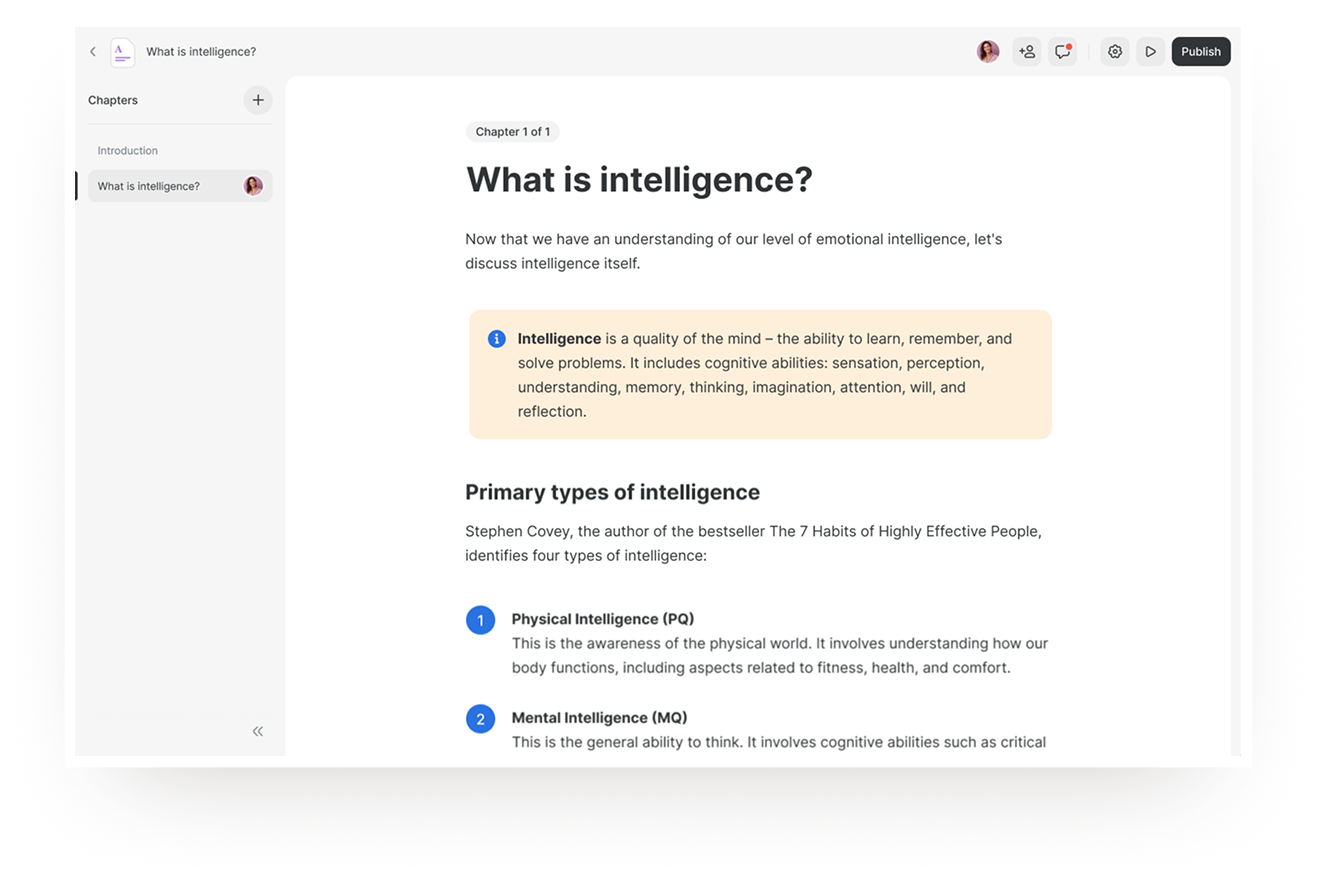
iSpring Cloud’s AI assistant does the heavy lifting of course creation for you by generating ideas, writing engaging content, producing images, and improving course design.
The tool also supports collaborative course authoring for a smoother development workflow.
Here’s an example of a course made using iSpring Cloud:
Create courses powered by AI
Here’s an overview of how iSpring Cloud AI performs based on our core criteria.
| iSpring Cloud AI | |
|---|---|
| Customization | Brand customization: choose from preset authoring features, including images, text, flashcards, and multiple-choice questions |
| Responsiveness | Fully responsive across all devices for an optimal user experience |
| Design | A clean, modern design |
| User-friendliness | An incredibly simple interface with no learning curve |
| Development time | Rapid development with the help of an AI assistant that converts documents into interactive, LMS-ready courses |
| Application | Suitable for Windows and Mac users |
| Price | From $720/year |
Try a 14-day free trial of iSpring Cloud AI to see how you can elevate your learning experiences.
FAQ on Articulate Storyline 360 vs. Rise
What is the difference between Articulate Rise and Articulate Storyline 360?
The main differences between the popular eLearning authoring tools Articulate Storyline 360 and Rise 360 come down to responsiveness and customization. Articulate Rise is a highly responsive browser-based authoring tool.
Conversely, Articulate Storyline enables you to build complex interactions from scratch. If you need a faster and easier tool, choose Rise. For experienced designers, Storyline will work best.
Is Storyline the same as Articulate Rise 360?
No, Articulate Storyline 360 is a more complex web-based authoring tool that requires more technical expertise from instructional designers. While being less responsive than Rise, it offers more capabilities for custom designs and interactive eLearning content.
What is Articulate Rise 360 used for?
Rise is a kind of traditional eLearning authoring tool usually used for creating quick and simple online courses. This is an easy-to-use, modular, cloud-based solution, and the courses created with it are mobile responsive and easily adapt to any device.
What is Articulate Storyline used for?
Advanced users can create custom, interactive courses with Storyline. Personalized interactions fit desktop courses, but can be easily integrated within the simpler Articulate Rise eLearning tool.
Can you convert a Rise 360 eLearning course to Storyline?
Yes, you can embed Articulate Rise courses into Articulate Storyline 360. To do this, you must first export the Rise 360 course as a web package and extract the zip file on your computer. Then, add the extracted folder to your Storyline project as a web object.
Is Articulate Storyline 360 going away?
While Articulate ended support for Storyline 3, you can still use it. However, newer versions are included in a more complex Articulate Storyline 360 solution. So, Storyline is not going away, but has changed.


